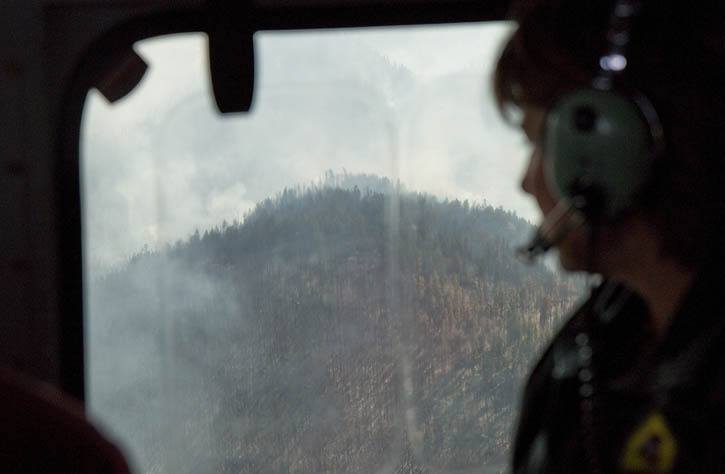On a recent drive through the B.C. Interior, I passed through McLure and Barriere, communities north of Kamloops that were devastated by wildfire in 2003.
While these communities have recovered, blackened tree trunks are still visible where fires burned for 75 days and forced the evacuation of 3,800 people.

With the early start to this year’s fire season, the media attention and effects of an unusual spring drought, you might think that B.C. is on pace to match that terrible summer.
You would be wrong. As of last week, area burned and money spent by the B.C. Wildfire Service had only just exceeded the totals for mid-August during last summer’s fire season, which were high but not remarkable.
The number of individual fires is higher this year, but that’s mostly a result of lightning storm patterns. Spending has topped $200 million, as it did last year at this time before finishing just below $300 million. The 2003 total was above $400 million, and the 2009 season was slightly below that.
Forests Minister Steve Thomson cautions that there are still many weeks to go and hot, dry conditions are expected for much of that. Once the damage is done for the year, the ministry reviews the impact on forests and begins assessment of which areas should be replanted and which should be left to regenerate naturally.
Pine forests need fire to regenerate, and the strategy in recent years has been to allow fires to burn out naturally and contain them to protect people and property. Decades of fire suppression, based on viewing Crown forests strictly as a timber resource, helped create conditions for the beetle epidemic that has left vast quantities of dead wood to fuel more fires.
The 2003 fire season set the tone for political debate on forest fire policy that has continued since then. The opposition points to recommendations from former Manitoba premier Gary Filmon that removing fuel from around communities is the best protection.
This task has proven impossibly big, especially as rural community tax bases shrink, but the ideological dance continues in Victoria. The NDP campaigned in 2013 on a promise to double tree planting, and its general approach is to spend more money and hire more staff.
Speaking of political dances, Premier Christy Clark has made a couple of appearances at fire sites where homes and businesses have been threatened or destroyed.
(Today’s big-city media formula is to emphasize danger and promote attacks on premiers of all stripes. If they don’t visit disasters, they are callous and uncaring. If they do, they’re exploiting the situation for photo ops.)
In her first fire scene appearance this summer, Clark warned that drought and huge fires may be “the new normal” for B.C. as climate warms and shifts. This is great positioning for the government’s plan to attend the latest global climate doom festival in Paris this fall, but it’s not borne out by recent forest fire results.
In terms of dollars spent and area burned, the years 2010, 2011, 2012 and 2013 were all well below average. Last year and 2009 were substantially above average, but 2008 and 2013 were among the quietest years on record.
Is drought the “new normal” too? The B.C. government’s own climate change forecast is for increasing overall precipitation, albeit with more rain and less snow.
Snowpacks for southern B.C. were indeed the lowest on record this past winter, but that record only goes back 31 years. And when were high snowfall records last broken? That would be 2011.
Tom Fletcher is legislature reporter and columnist for Black Press. Twitter: @tomfletcherbc
